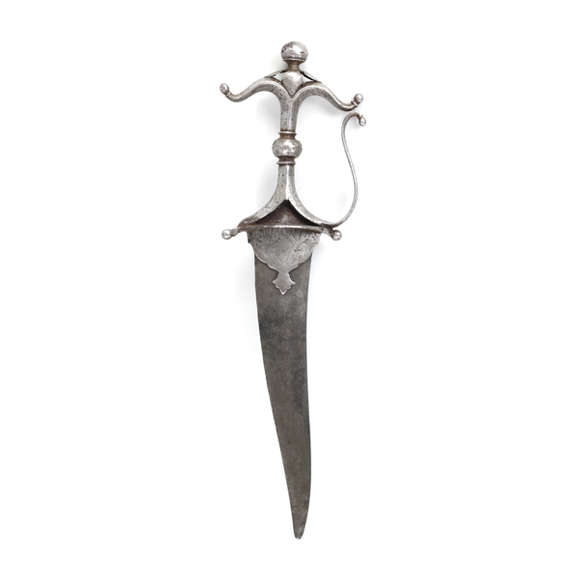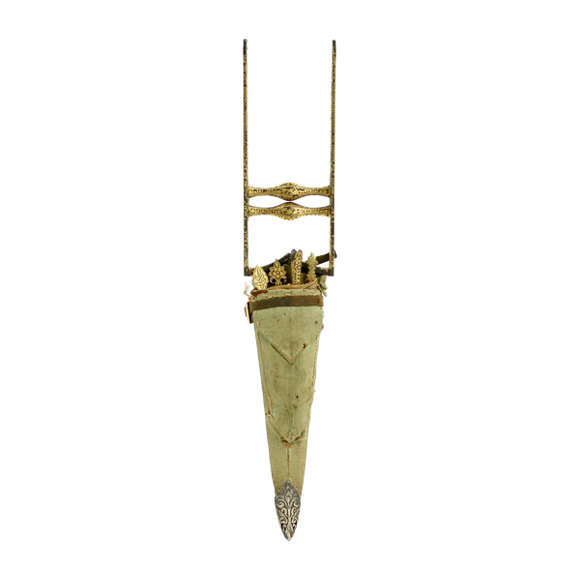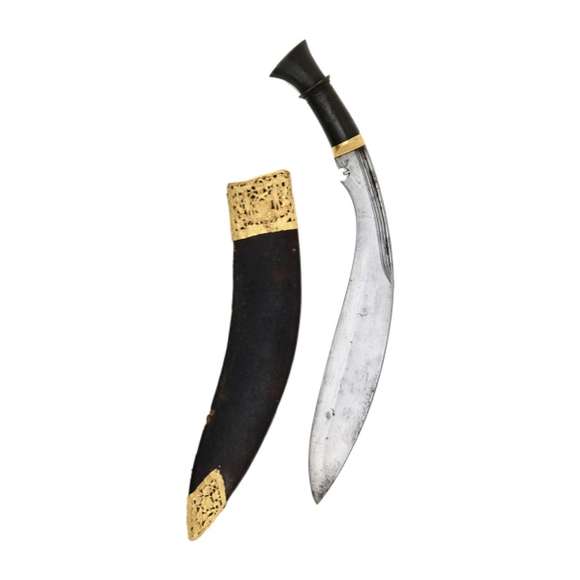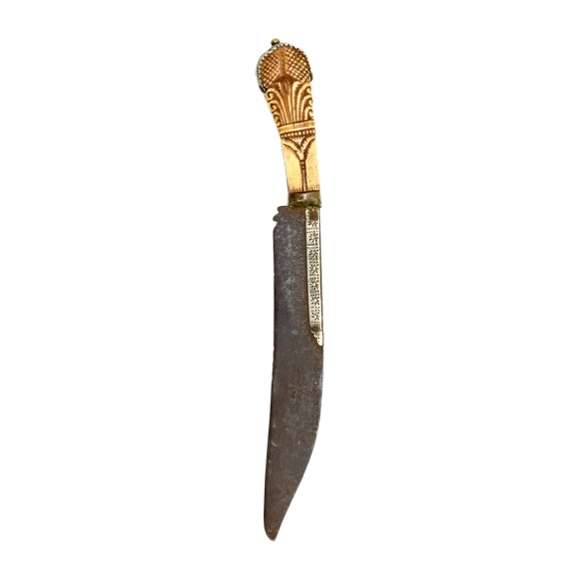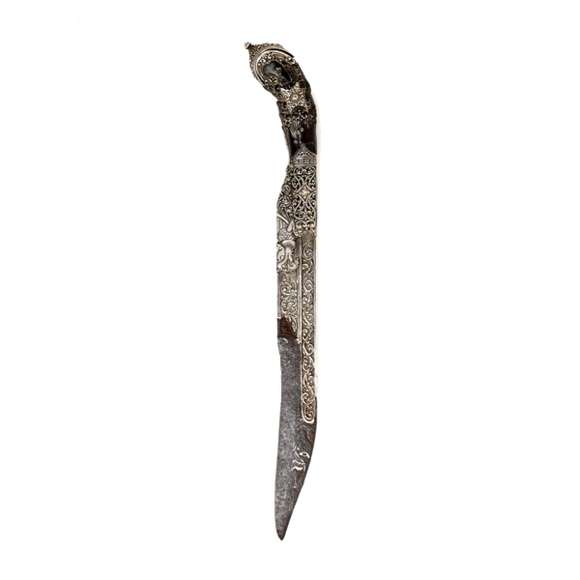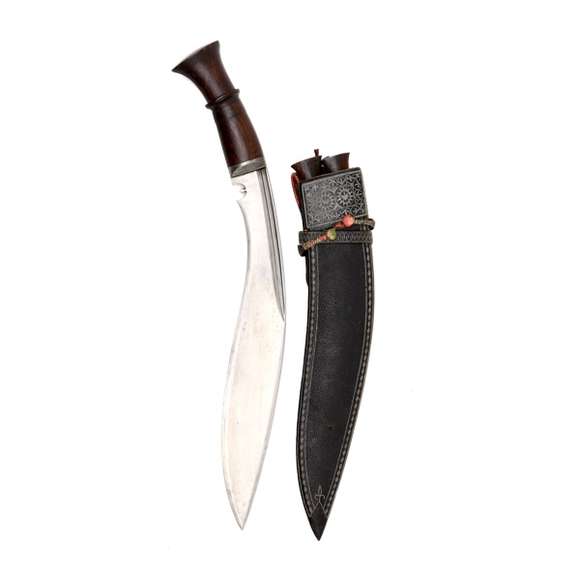Somewhat worn but once very high-quality, with great sculptural qualities and remains of silver "true…

Sheathed 44.7 cm
Knife 39.3 cm
26.4 cm
Base 5.8 mm
Tip 4.2 mm
Base 26 mm
Tip 20 mm
Sheathed 338 grams
Dagger 250 grams
6.5 cm from guard
Ainu culture
Hokkaido, Japan
19th to early 20th century
Iron, steel, deer antler, wood, copper, brass
Introduction
Ainu daggers that were worn through a belt were called kuttom-ushbe in the Ainu language. They resemble the tantō of the Japanese and clearly take inspiration from them. These knives were mainly worn by wealthy Ainu and chiefs.
For more information, see my article: Knives and swords of the Ainu.
This example
An interesting specimen. The blade appears Japanese, until you take it out and inspect the tang, which is not finished in the typical Japanese manner. The horimono (engravings) of butterflies and flowers are very well done, much better than any blade engravings I’ve seen on any other Ainu knife. I wonder whether this was outsourced to a Japanese artist.

The blade further has a Japanese-style collar piece, called habaki.
The mountings are made of wood, with deer antler fittings. The grip is wrapped with rattan strips, forming ornamental knots. It has a deer antler guard, pommel, and ferrule. The overall shape of the hilt reminds of ancient Nara period (710-794 AD) swords, such as the Kingin-densō-tachi of the Shōsō-in that dates from before 756 AD.
The hilt is made so it appears the blade is held with a pin, but this is simulated. The tang was held with some sort of resin instead.
The scabbard has deer antler mouth and end pieces and a loop for the cord that ties the scabbard to the belt. Two rattan straps help hold the wooden slabs together. The scabbard is decorated with a metal frog and deer antler shakuhachi flute. I’m not sure of the symbolism here, it may refer to a tale of local lore.
Unusual for Ainu daggers, it also carries a by-knife called kozuka in Japanese. Its blade is signed in a somewhat sloppy manner, making it hard to read but the last work appears to be saku 作 "made" identifying it as a maker's mark.












Thought to have been presented by the Royal House of Nepal.
Of nice quality, with unusual openwork silver bolster with serapendiya.
An understated, elegant khukuri of substantial proportions with fine layered blade.

